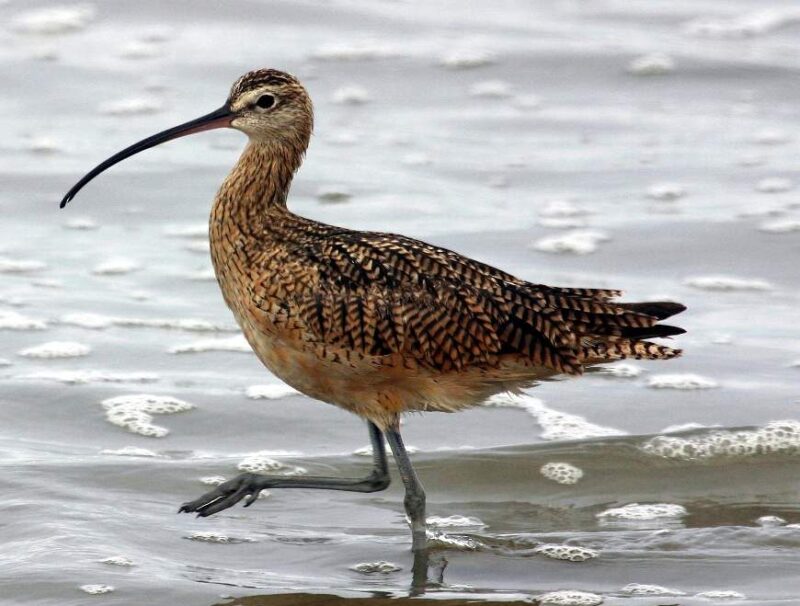Serious concerns have been raised about the future of the curlew population in Donegal.
Research from UK-based charity, Curlew Action, indicates the bird is likely to be extinct here within a decade.
Development Officer with Birdwatch Ireland, Niall Hatch, said “the estimate has gone as low as just 105 pairs” based on a National Parks and Wildlife Service report in 2021, and that the “decline could be as much as 98%” since the 1980s when there were over 5,000 pairs.
Losses were most prevalent in counties Donegal, Kildare, Kerry and along the Shannon system
According to the report, Donegal has seen a ‘dramatic’ decline since 2015-2017 surveys.
“Birds have been lost from a number of sites in many counties, most notably Donegal where pairs have been lost across the entire county, in Kerry where the already depleted population has declined further, and in Kildare and Laois where losses exceed gains,” the report stated.
The loss of breeding curlew in some areas has been dramatic since 2015-17; for example, in Donegal, as few as two pairs now occur where seven occurred in 2015-17.
Mr Hatch said successive governments have failed to protect the curlew and that habitat loss, afforestation, pollution and climate change are all factors in the decline.
Speaking on RTÉ’s Morning Ireland, Mr Hatch said the “curlew is very sensitive to change” and that it’s important that findings of the curlew taskforce from 2019 are implemented.
“Particularly when it comes to planning. We need the locations of the curlews and proper ministerial guidelines shared with the planning authorities, because we are talking about very few areas where these curlews still exist.”
He said the bird is in trouble internationally, “but the decline is much larger in Ireland, even than our nearest neighbour across the water in Britain, where there’s been big declines”.
Mr Hatch said the bird is a “very important part of our culture” but is also a “flagship” and highlights other declines in the environment.
“Humans should pay heed to that too, we rely on that same environment, so the curlew is shouting a warning to us.”
Elsewhere, scientists say the country’s smallest mammal is in danger of extinction due to the arrival of a more invasive species of shrew.
Pygmy shrews normally co-exist with the larger greater white-toothed shrew, but the latter species is now out-competing its smaller counterpart for food.
The Atlantic and South East Technological Universities study analysed DNA from insects eaten by shrews to identify feeding trends.
The native pygmy species needs to consume more than its body weight daily to survive. But the research has found that the arrival of the white-toothed shrew to Ireland in 2007, altered their traditional eating patterns.
Scientists have determined that the invasive shrew eats larger insects initially but then switches to the smaller insects that the pygmy shrew relies on to survive. In turn, this leads to the native pygmy shrew being replaced.
Tags:








